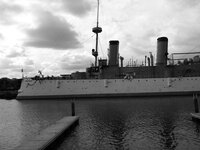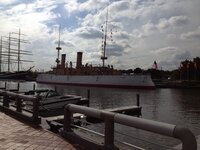SaparotRob
Unter Gemeine Geschwader Murmeltier XIII
U.S.S. Olympia is moored right across on the opposite shore. I stood on Olympia's deck and saw U.S.S. New Jersey. From the era of the pre-dreadnoughts to the last of the super dreadnoughts. I'm afraid I was the only there who got it.I've a nice book about the Iowa class battleships, and Jane's book on all battleships built since Dreadnought. Went on a nice tour of the New Jersey moored at Camden, NJ across the river from Philly a few years ago. My preparatory reading allowed me some "self-guided" viewing of the various areas open to the public on the New Jersey. Talk about one massive machine!! By the early 80s it had been refitted with cruise missiles and Phalanx air defense equipment, and of course retained its nine 16" guns
In reference to SaparotRob's citing costliness in personnel and resources, I can't speak for the New Jersey's post WW2 deployment during the Korean and Vietnam wars, but it's my understanding that during its Lebanese war deployment in the early 80s, the New Jersey had to be accompanied by an entire carrier group to provide air cover, as well as further offensive capability. That's costly in personnel and resources. It's a big target.
If you ever have a chance to visit any of the Iowa-class battleships (Iowa, Missouri, New Jersey, Wisconsin) or any other museum battleships like the Texas, do it.


